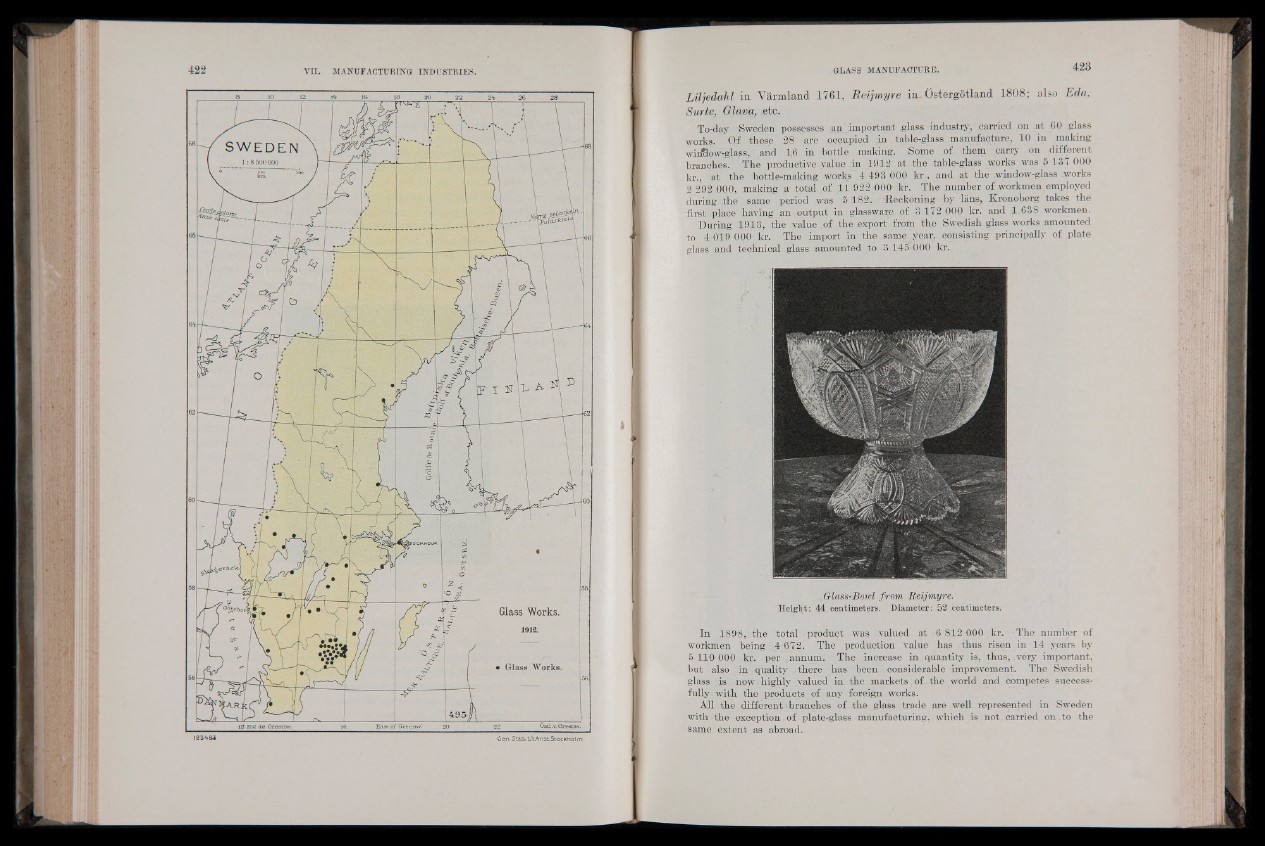
Liljedahl in Varmland 1761, Reijmyre in. Ostergotland 1808; also Eda,
Surte, Glava, ¡etc.
To-day Sweden possesses an important glass industry, .carried on at 60 glass
works. Of the se ’ 28 are .occupied in table-glass manufacture, 10 in making
wufflow-glapsr and 1,6 in bottle making.’ Some of them .carry on different
branches. The productive value in 1912 at the table-glass .works was 5 187 000
kr., at the -bottle-making works 4 493 000 kr., and at the .window-glass works
2 292 000, making ,a total of 11 922 000 kr. The number of workmen employed
during the same period was 5 182. Reckoning by Ians, Kronoberg takes the
first place having an .output in glassware of 3 172 000 kr. and 1 638 workmen.
During 1913, the value of the export from the Swedish glass works .amounted
to 4 019 000 kr. The import in the same year, consisting principally of plate
glass and technical glass amounted to 3 145 000 kr.
,Glass-Bowl from Reijmyre.
Height: 14 centimeters. Diameter: 52 centimeters.
In 1898, the total product was valued at ¡6 812 000 kr. The number of
workmen being ,4 6.72. The production value has thus risen in 14 years by
5 110 000 kr. per ¡annum. The increase in quantity is, thus, .very important,
but also, in .quality there has been considerable improvement. The Swedish
glass is now highly valued in the markets of the world and competes successfully
with the products of any foreign works.
All the different 1 branches of the glass trade are well represented in Sweden
with the exception.of plate-glass manufacturing, which is not carried on.to the
same extent as abroad.